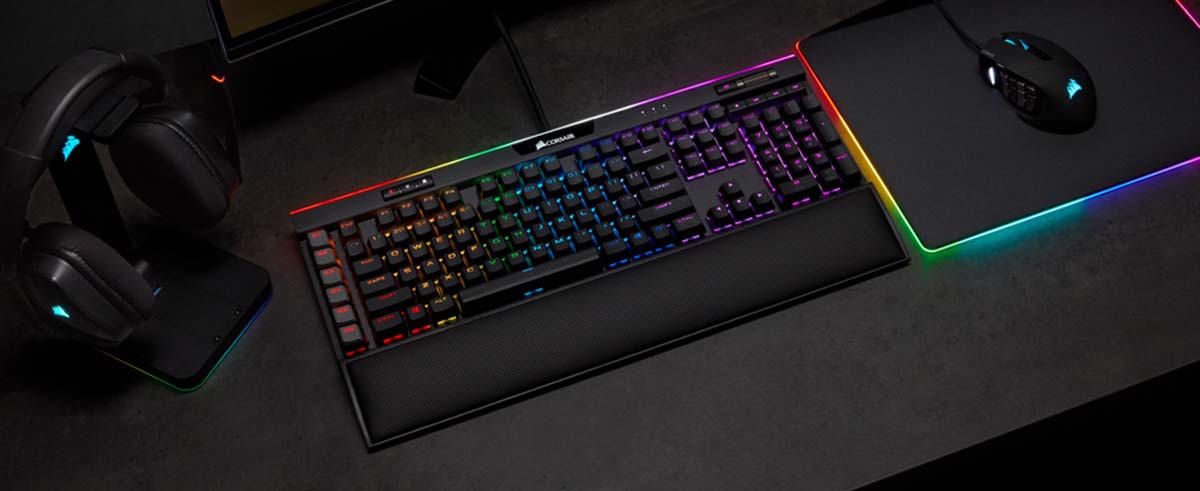Tom's Guide Verdict
The Corsair K95 RGB Platinum XT is a subtle, but worthwhile, reworking of Corsair's excellent K95 model.
Pros
- +
Authentic Cherry MX switches
- +
Gorgeous RGB lighting
- +
Elgato streaming functionality
- +
Comfortable wrist rest
Cons
- -
Complicated software
Why you can trust Tom's Guide
As far as I know, Corsair has never made a bad keyboard and the K95 RGB Platinum XT ($200) is no exception. The keyboard is a slight reworking of Corsair's excellent K95 RGB Platinum design, and like its predecessor, it features a comfortable layout, authentic Cherry MX switches and excellent software, along with some top-notch rainbow lighting. This time around, though, there's new functionality to help streamers, as well as more durable keycaps and expanded onboard memory. The upgrades are subtle, but worthwhile.
There's no denying that the K95 XT is very expensive, and the extra column of macro keys is not going to be all that helpful for most people. If that's the case for you, you should pick up the Corsair K70 RGB Mk.2 ($180) instead, and never look back. But if you need a few extra keys, a number of comfortable keycaps and one of the best wrist rests on the market, the K95 XT is one of the best gaming keyboards you can buy right now.
Design
The K95 XT looks almost the same as the previous K95 model: It's a large (18.3 x 6.7 x 1.4 inches) keyboard, with a black plastic-and-aluminum chassis. You get all the standard keys, plus a media bar in the upper-right corner, some specific function buttons in the upper-left corner and an extra column of six programmable keys on the far left. By default, these items have textured keycaps with G1 through G6 printed on them, indicating that you can use them for game functions. But you can also replace the keys with textured "S1" through "S6" keycaps (included) in case you want to program them for streaming instead. (More on that later.)

I've spoken at length about how Corsair's discrete media keys are things of beauty, and how its overall designs are both pretty and functional. What I haven't mentioned before is that the LED strip is right at the top of the K95, which makes the whole keyboard just a little bit prettier. There's also the foam wrist rest, which is much more comfortable than the plastic accessory that came with previous K95 models; it's actually one of the most comfortable wrist rests I've used with any keyboard.
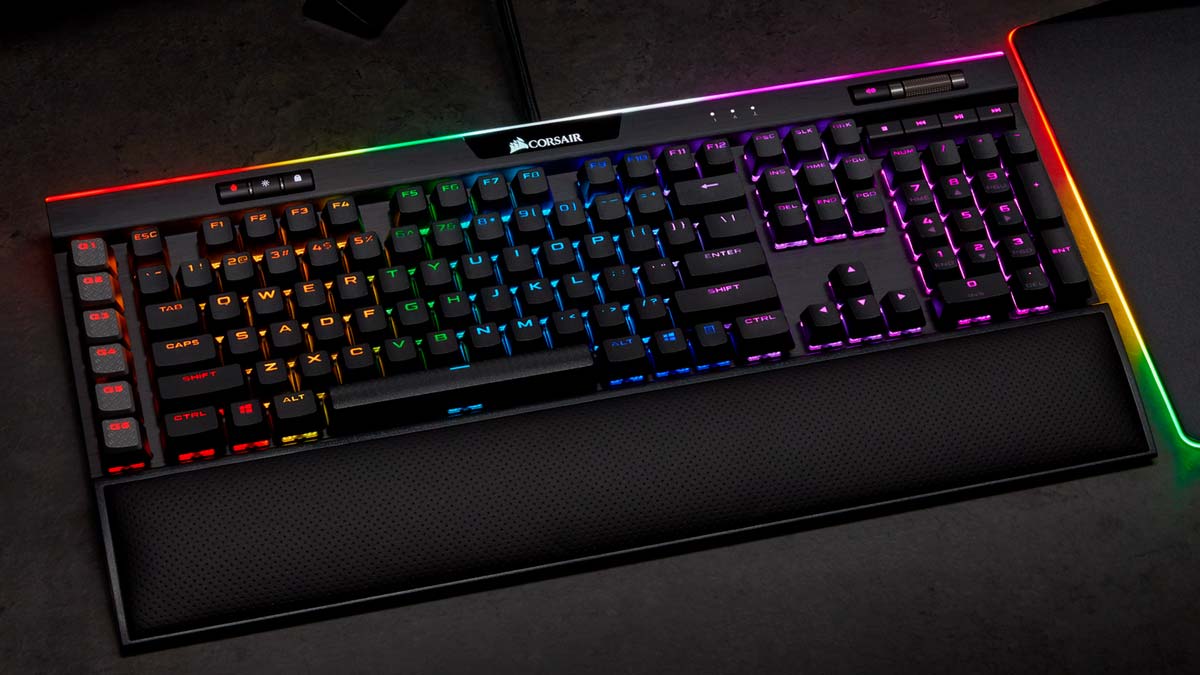
My only gripe — and it's a gripe I have with any keyboard that has extra columns — is that it's not easy to center your hands the way you would on a standard full-size keyboard. You have to either place the device off-center on your desk, or stretch one of your arms further than the other.
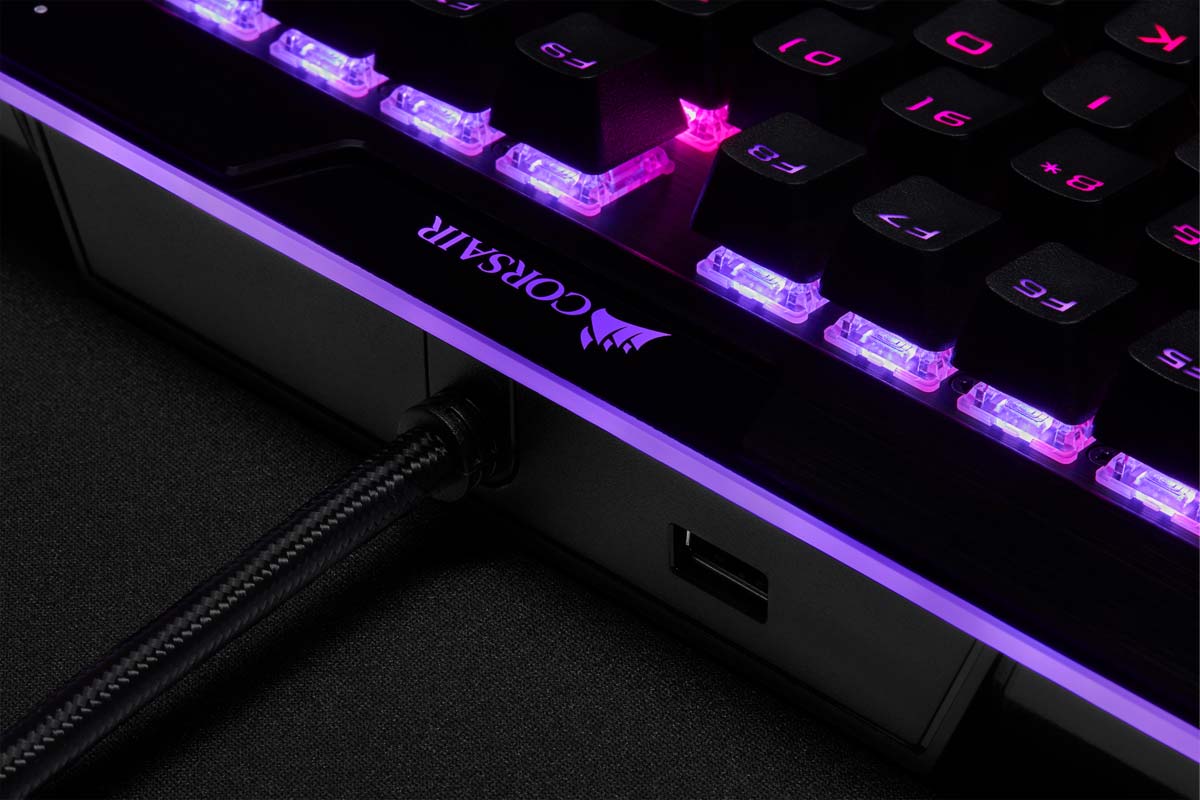
The setup definitely takes some getting used to, although you can get used to it, especially if you train yourself to use your six extra keys. There's also a USB passthrough, which is convenient — but there's no cable management for the keyboard's beefy cord, which is inconvenient.
Keys
One thing that I appreciate about Corsair keyboards is that they stick with Cherry MX switches. While cheaper mechanical switches have gotten much better over the past few years, there's still nothing quite like the German efficiency and comfort of an authentic Cherry MX. The model I reviewed came with clicky, tactile Blues (my favorite), but you can also get the keyboard with quick, linear Cherry MX Speeds or the quiet, tactile Cherry MX Browns.
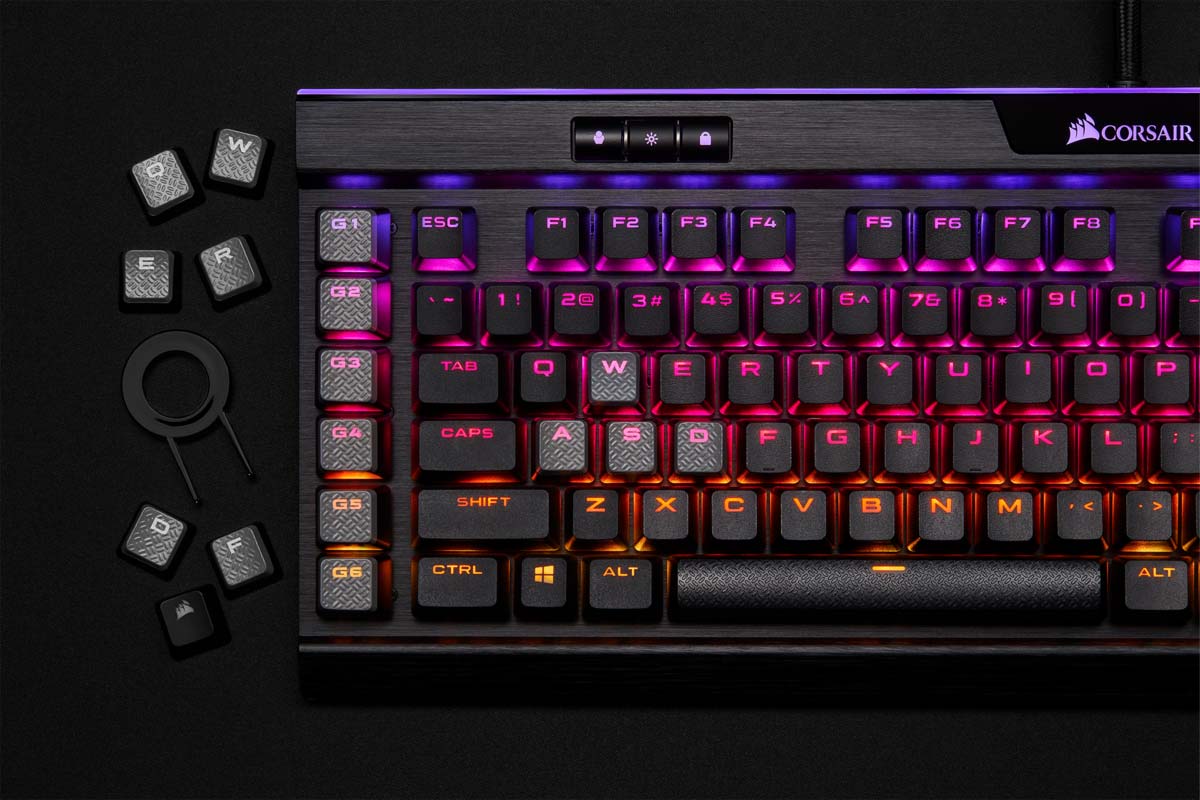
The keyboard is excellent for typing, too. On Typing.com, I scored 120 words per minute, with 98% accuracy, compared to 116 wpm with 98% accuracy on my usual Logitech G915.
Features
The K95 XT runs on the Corsair Utility Engine (iCUE) software, which hasn't changed considerably in the last few years, meaning that it's still both incredibly robust and just a little difficult to use. iCUE is there primarily to let you adjust the very detailed RGB lighting options, but you can also use it to disable certain keys while you're gaming, reprogramming any key on the device (including the six extra G keys), or linking profiles with individual games and programs. There are five onboard profiles, up from three in the last model, or you can store an indefinite number on a computer.
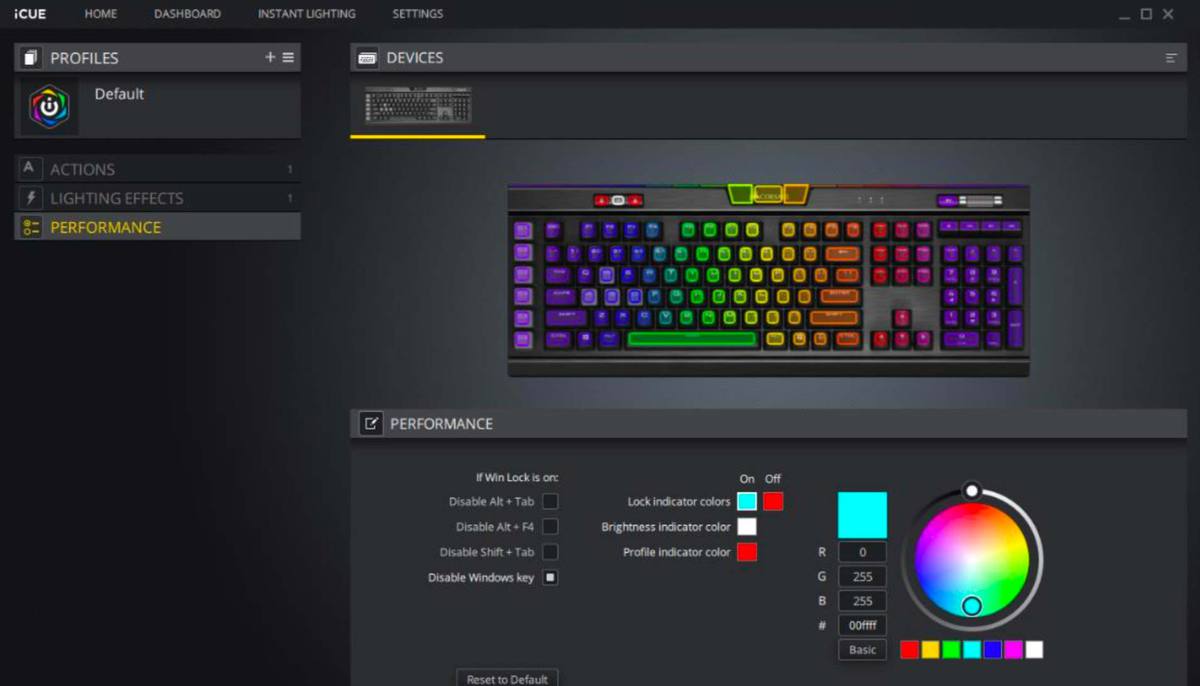
I respect just how much you can do with the iCUE software, although actually getting it done is a bit of a challenge. If you want to reprogram a key, for example, it's not enough just to click on it and select a new function. You have to access the Action Library, pick a feature set from a drop-down menu, specify the feature you want, drag the action into the Actions tab, click on the Action, then click on a key. It's not difficult, per se, but it is needlessly tedious.
Setting up lighting can be similarly complicated, but the tradeoff is that you can get some truly gorgeous designs that you'd never see on other RGB keyboards. As I type this, I have a rainbow-ripple effect laid over a spiral-rainbow-wave design. Every time I touch a button, a whole spectrum of colors radiates out across the keyboard in two different directions at once. It's simply breathtaking, and no other company has done this as well as Corsair.
What's really of interest this time around is that you can program Elgato Stream Deck commands directly to the six extra keys. (This is where those swappable keycaps I mentioned earlier come in handy.)
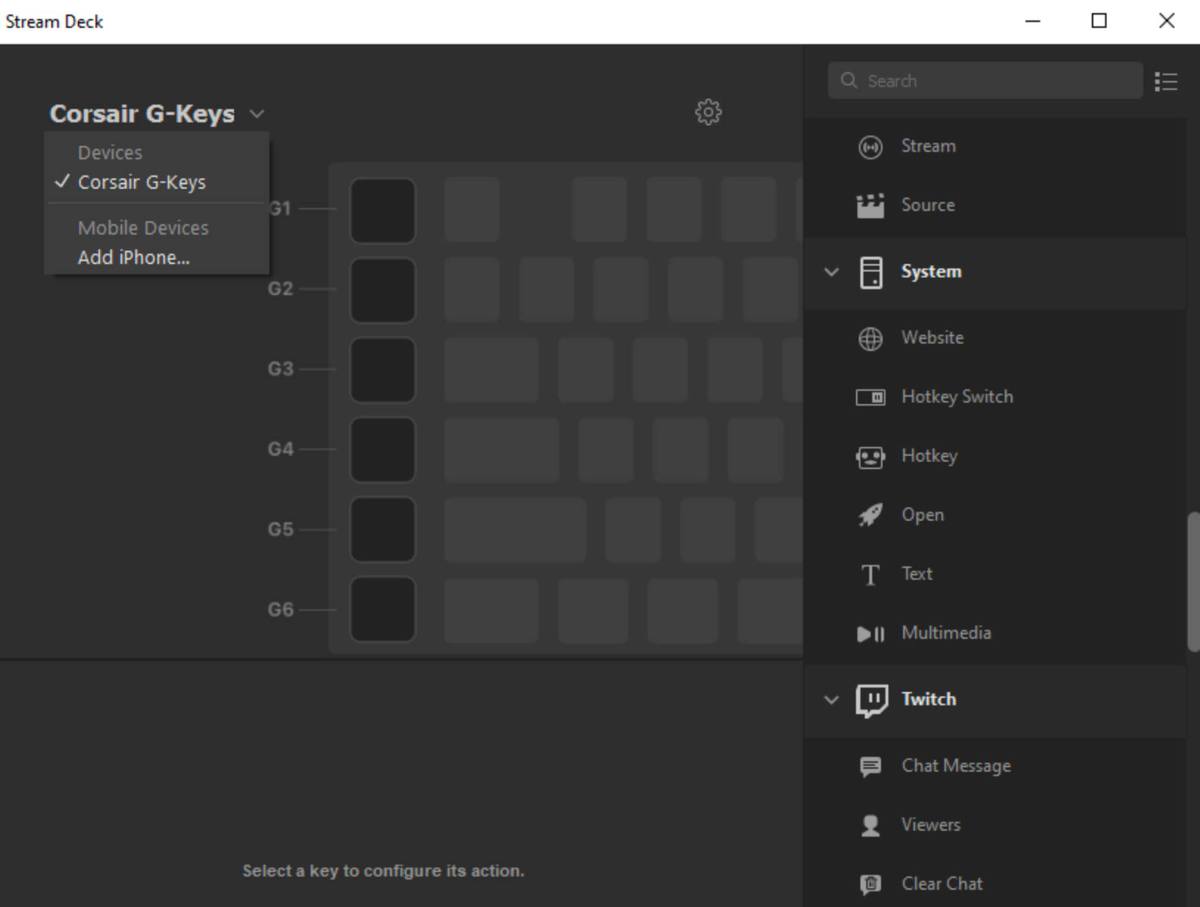
By coordinating with the Elgato Stream Deck software, you can set the extra keys to switch between screens, launch programs, post tweets, share GIFs and otherwise interact with a streaming audience. It's not going to make or break the keyboard for everyday players, but for the streaming crowd, it's much easier than clicking through two or three different windows each time you want to execute a command. You could even theoretically program all the basic Elgato commands to your keyboard and eliminate the need for a second monitor entirely.
Performance
Unsurprisingly, I had the best time using the K95 XT with World of Warcraft. The extra keys come in handy for a massively multiplayer online (MMO) game, particularly for high-level players who want to delegate parts of their skill rotations to macros.
However, the keyboard acquitted itself just as well for every other genre. In Overwatch, I traversed the battlefield with ease. In Age of Empires II: Definitive Edition, I commanded my villagers to construct a city without having to scroll through menus. In Thronebreaker: The Witcher Tales, I could consult my map between matches. The Cherry switches and breathable wrist rest make things even easier.
Bottom Line
The K95 XT is an expensive keyboard — but it's no more expensive than its predecessor, and a bit better in some measurable ways. The wrist rest is a big step up, the keycaps are smoother, and the Elgato shortcuts could simplify things considerably for streamers. Beyond that, you still get excellent key switches, a solid design and some incredibly attractive lighting.
Streamers and MMO players should feel confident in picking up a K95 XT. For others, the K70 RGB Mk.2 is arguably a better investment — but if you want a bunch of extra keys and keycaps, who am I to say no?
Marshall Honorof is a senior editor for Tom's Guide, overseeing the site's coverage of gaming hardware and software. He comes from a science writing background, having studied paleomammalogy, biological anthropology, and the history of science and technology. After hours, you can find him practicing taekwondo or doing deep dives on classic sci-fi.
